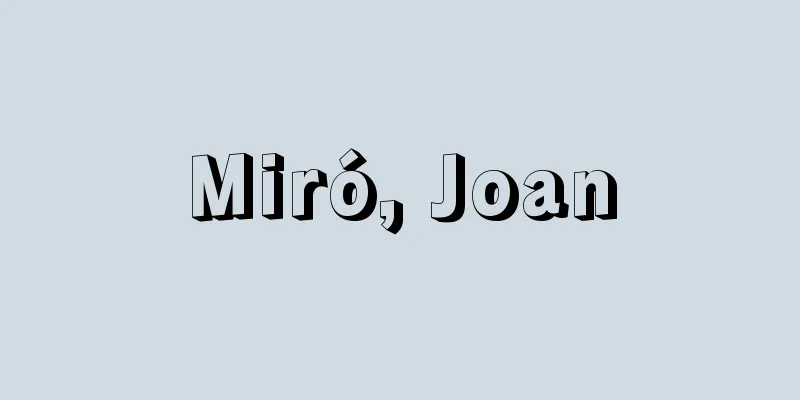Robe - Ho

|
A type of clothing worn by the aristocracy from the Nara period onwards. It refers to outerwear such as the morning dress, its variation Sokutai, its abbreviated form Hoko, Ikan, and the everyday formal attire Noshi. It is also called "Uenokinu". The word robe first appeared in the Yoro Clothing Order, and it refers to an Iranian-Tang-style garment. It has a stand-up collar and a plate-like collar. Robes from the Nara period to the early Heian period were made of wide fabric, so there were ones with a one- and two-width body and one-width sleeves with a narrower sleeve added to give a long yuki. From the mid-Heian period onwards, as clothing became more Japanese, the body of the robe became looser and longer in length, with sleeves made in two widths, with an inner sleeve and a slightly narrower end sleeve, and the sleeves became longer and wider. The robes used by civil servants and those used by young people and military officers were different in style, with the former called hoeki robes, with both sides sewn together and a brocade hem made of fabric running horizontally, and also called ura robes. In the past, both sides of the brocade were pleated, but as clothing became longer, the pleats were released and pulled out, and they came to be called arisaki robes. The front of the robe is tucked up to make a pocket, and the back part is tucked up and sewn up in advance, which is called a "hakoe" or a "kakubukuro." The latter is called a "ketteki" robe, which is open on both sides and does not have brocade, and is also called a "muran" robe. The colors of the court dress and the robes of the court robes, including the sokutai, cloth hakama, and ikekan, were determined by rank, i.e., the official colors. The official colors were based on the Yoro Clothing Order, but they changed slightly as time went on, and in the early Heian period, the distinction between deep and light colors such as purple, scarlet, green, and indigo disappeared, and all colors were deep, and yellow lacquer and blue were added to the colors used by the emperor. From the middle period onwards, deep purple was replaced by black, and the fourth rank also wore black, while everyone below the sixth rank wore deep indigo, which was called a green robe or green robe. The material of the robe was as follows: for those of the fifth rank or higher, the outer fabric was twill, the lining was plain silk in winter, and brocade or kenmonsha in summer. For those of the sixth rank or lower, both the outer fabric and lining were plain silk, and in summer, plain brocade or raw silk. The everyday clothing of nobility and above, the naoshi, was also a robe with sewn underarms, and was called a zappo because it was not a rank robe of the same color. [Takada Yamato] [Reference] |©Minoru Sugai formal attire Source: Shogakukan Encyclopedia Nipponica About Encyclopedia Nipponica Information | Legend |
|
奈良時代以降に貴族階級で用いられた衣服の一種。朝服および、その変化形式である束帯(そくたい)、それを略した布袴(ほうこ)、衣冠、日常着の直衣(のうし)などの上着。「うえのきぬ」ともいわれる。袍の語の初見は養老(ようろう)の衣服令(りょう)にみられ、イラン系唐風の衣。詰め襟式の盤領(あげくび)で、奈良時代から平安時代初期にかけての袍は、生地(きじ)の幅が広かったため、身頃(みごろ)が一幅(ひとの)と二幅(ふたの)のもの、袖(そで)が一幅と、それに幅の狭いものを加えた裄(ゆき)の長いものがみられる。平安時代中期以後、服装の和様化とともに、袍の身頃は二幅でゆったりとし身丈が長く、袖は、奥袖とそれよりやや幅の狭い端袖(はたそで)を加えた二幅仕立て、袖丈が長い広袖形式となった。文官の用いる袍と若年の者や武官の用いる袍とは形式を異にし、前者は縫腋(ほうえき)の袍といって、両脇(わき)が縫い合わされ、裾(すそ)に生地を横に用いた襴(らん)がつき、有襴(うらん)の袍ともいわれる。襴の両脇は、古くはひだを畳んであったが、衣服の長大化とともに、そのひだを解いて外に引き出し蟻先(ありさき)とよんでいる。縫腋の袍の前身頃をたくし上げて、懐(ふところ)をつくる分だけ、あらかじめ後ろ腰の部分をたくし上げて縫い留めたものを「はこえ」とか格袋(かくぶくろ)とよんでいる。後者は闕腋(けってき)の袍といって、両脇を縫いふさがず開いていて襴をつけないもので、無襴(むらん)の袍ともいわれる。 朝服および位袍と称される束帯、布袴、衣冠の袍は、位階相当の色すなわち当色(とうじき)が定められている。当色は養老の衣服令が基本となっているが、時代の下降とともに若干の変化をみせ、平安時代初期に、紫、緋(ひ)、緑、縹(はなだ)などの深浅の区別がなくなって、すべて深い色とし、また天皇の用いる色に黄櫨染(こうろぜん)と青色(あおいろ)が加えられた。さらに中期以降、深紫は黒にかわり、四位も黒を用い、六位以下はみな深縹を用いたが、それを緑袍(ろくほう)とか緑衫(ろうそう)とよんだ。 袍の地質は、五位以上が冬に表地を綾(あや)、裏地を平絹、夏に縠か顕文紗(けんもんしゃ)。六位以下は表地・裏地とも平絹、夏に無文縠か生絹(すずし)とした。公卿(くぎょう)以上の者が着用する日常衣の直衣も縫腋の袍で、当色による位袍ではないため雑袍(ざっぽう)といわれる。 [高田倭男] [参照項目] |©須貝 稔"> 束帯 出典 小学館 日本大百科全書(ニッポニカ)日本大百科全書(ニッポニカ)について 情報 | 凡例 |
Recommend
Naṭeśvara (English spelling) Natesvara
…meaning “King of Dancers,” another name for Shiv...
Rack railway
A general term for railways that use the meshing o...
Imperial gallon
...Its size differs between the UK and the US. (1...
Eva Peron (name) - Eva Peron
...1919-52). Perón won a landslide victory in the...
Sale mortgage - Selling mortgage
The term "collateral" refers to a securi...
Sa'ūd b. 'Abd al-'Aziz (English spelling)
...Abd al-Aziz had to adapt to the new era after ...
Fumaeru - Fumaeru
〘Other A Lower 1 (Ha Lower 1)〙 Fuma・Fu 〘Other Ha L...
Functional position
A functionally efficient position for daily life w...
Imperial Gold Coin
…It is sometimes written as Rosiya. In kanji, it ...
Mantenon
...Other salons in the 17th century included the ...
Thakuri (English spelling)
...The rule of kings named Deva continued until 1...
Leo (Leo)
The abbreviation is Leo. It is a major spring cons...
Analcestes - Analcestes
…They are so-called scleractinian phyla, and thei...
Ranking (Japanese clothing) - Kakutsuke
...Kimonos are lined from October to May, hitoe i...
The four treasures of the study
This refers to the four tools used by literati in...









